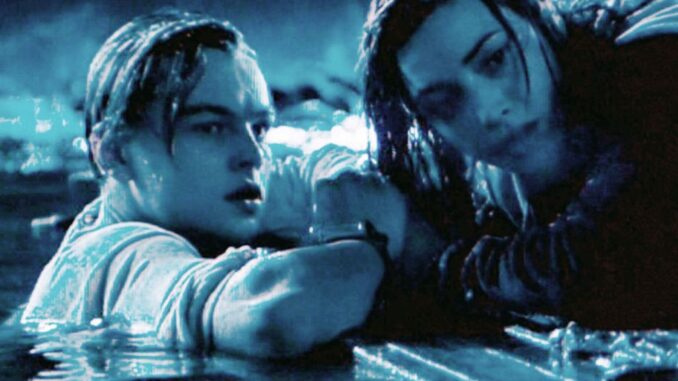
The Unblinking Eye: When the Stars Betray Perfection in "Titanic"
For nearly three decades, James Cameron’s "Titanic" has reigned supreme as a cinematic titan, lauded not only for its epic romance and heart-wrenching tragedy but also for its meticulous, almost obsessive, historical accuracy. Cameron famously dedicated years to researching every rivet, every deck plan, every survivor account, diving to the wreck himself, ensuring that his recreation of the ill-fated liner was as authentic as humanly possible. This obsessive commitment to detail became a cornerstone of the film's mystique, elevating it from mere blockbuster to a near-documentary-level historical recreation. Yet, amidst this monumental accuracy, lies a tiny, twinkling asterisk – a mistake so glaring, so utterly out of place, for one specific reason, that it has become a favorite "gotcha" for eagle-eyed fans: the shifting stars.
The scene in question is one of the film's most poignant and visually arresting: Rose and Jack, in the ship's final hours, stand on the stern deck, looking up at the cold, indifferent canvas of the night sky. The ship is listing dramatically, the chaos of the sinking unfolding around them, but for a brief moment, their focus is upward, toward the silent witnesses of their impending doom. The camera pans up, revealing the vast expanse of stars, a celestial tapestry against the inky black. It’s a moment designed to evoke both awe and profound helplessness, juxtaposing human fragility against the immense, unchanging cosmos.
Astute viewers, particularly those with a celestial bent, noticed something amiss. In a ship heading west-southwest from the North Atlantic, the constellation of stars visible above the ship's stern changes between cuts. Specifically, the North Star, steadfast and true in reality, shifts its position, or is entirely absent when it should be prominent, given the ship's known orientation and the time of night. What starts as a relatively accurate depiction morphs into a subtly different sky, a jumble of constellations that would not realistically be visible from that vantage point at that precise moment.
This isn't just a misplaced prop, a fleeting anachronism in a period costume, or a minor continuity error that might be forgiven in a less ambitious film. This is a celestial error, and therein lies its singular, glaring nature. For a director renowned for his near-pathological attention to detail, especially regarding the ship's orientation (he knew which way it was pointing!), a mistake in the fixed tapestry of the night sky feels almost like a betrayal of his own meticulousness. Cameron literally consulted experts on every rivet, every porthole, every piece of crockery recovered or recreated. He recreated the ship's grand staircase with painstaking accuracy. He obsessed over the specific shade of the linoleum. Yet, the stars—the one aspect of the setting that is entirely immutable and predictable, the one element that requires simple astronomical data rather than complex historical research—they weren't quite right.
The reason this error is so "glaringly out of place" is precisely because of the towering reputation Cameron built around the film's authenticity. He prided himself on making the "most accurate historical drama ever filmed," a claim often repeated by critics and fans alike. When a tiny flaw emerges in the very fabric of the cosmos, it undermines that claim in a way a misaligned chair or a slightly anachronistic buckle simply cannot. The stars are universal, timeless, and scientifically verifiable. Their position is not subject to human error in the same way a costume design might be. To get them wrong, in a film so devoted to getting everything else right, feels almost ironic.
It speaks to the incredible depth of immersion "Titanic" achieved that fans, nearly three decades later, are still pouring over frames, not just for emotional impact but for scientific and historical veracity. Their discovery of the shifting stars isn't an attempt to diminish the film's genius, but rather a testament to its power to create such a convincing world that any tiny fracture in its flawless facade becomes a fascinating talking point. It's a playful "gotcha" that underscores the human element in even the most technologically advanced and meticulously researched artistic endeavors.
Yet, despite this singular celestial anomaly, the film's monumental achievement remains undimmed. The fleeting inaccuracy of the North Star does not diminish the emotional resonance of Rose and Jack's final moments, nor does it detract from the sheer terror of the sinking. It simply serves as a fascinating footnote, a whisper of human fallibility in an otherwise Herculean effort of cinematic perfection. It reminds us that even in the most painstakingly crafted illusion, the unblinking eye of reality—or in this case, the fixed gaze of the cosmos—can occasionally spot a subtle, yet strangely unforgettable, deviation.
